Secure secure SMTP mail flow between different Exchange Server 2007 organizations
In this article, I will show you how to create secure SMTP traffic mail flow between Exchange Server 2007 systems in various Exchange organizations. Protecting SMTP traffic between Exchange 2007 organizations is much simpler than its previous versions.
The basics
Is it necessary to protect SMTP traffic between different Exchange Servers? Let's try a little test later.
Launch the network detector with your favorite traffic analyzer. In this example, I use Microsoft Network Monitor 3.0. While the network detector is running, start the Telnet session in Exchange Server with port 25 and send a message through it. Stop the Netmon detection program and filter the traffic packed by the SMTP protocol. What do you see? Yes, the entire authentication program of the SMTP session is plain text!

Figure 1: Detection of SMTP networks with Netmon

Figure 2: Sending an SMTP message via Telnet
Now, you know that you need to deploy some security programs between Exchange Servers. But which solution is best? If IPSEC is used, what will it mean when it is dynamic? At the very least, you must use 'pre-shared' keys to deploy IPSEC between servers. And the program will work well if your Exchange server number is only a few. Another solution, deploy IPSEC on multiple Exchange Server systems, use certificates. If you want to deploy certificates between Exchange Servers, you will need a PKI (Public Key Infrastructure).
There is another new solution in Exchange Server 2007 that uses built-in functions.
Exchange Server 2007 uses some of the following methods to ensure integrity and encryption for mail:
- Mutual TLS
- Opportunistic TLS
- Direct Trust
- Domain Security
Mutual TLS
TLS (Transport Layer Security), ie the transport layer security protocol is the continuation of Secure Sockets Layer (SSL) - a secure socket layer protocol. SSL is used to encrypt mail flow in Exchange 2007. The Multual term means that both Exchange Server systems in the mail delivery process will check the TLS certificate before the connection is established. Mutual TLS is deployed in the configuration, in which both the sender and the receiver authenticate each other before sending data.
Opportunistic TLS
Opportunistic TLS is a new component in Exchange 2007. Exchange Server 2007 attempts to secure mail flow to another Exchange 2007 system, or to an external mailing system. It also tries to allow a TLS session with another mailing system in the form of an anonymous TLS request. This is different from Exchange 2003. In Exchange 2003, you must enable TLS 'manually' between two different Exchange Server systems.
Direct Trust
All mail traffic is automatically encrypted between Exchange Server systems, regardless of the role used as the Hub Transport or Edge Transport. The Direct Trust does not use the validation mechanism of aggregated X.509 certificates. Instead, it uses a direct validation mechanism for the presence of a certificate in Active Directory. You will not have problems using self-signed certificates or internal certificate authentication mode.
Domain Security
Domain Security is a combination of different technologies and components, such as certificate management programs, Exchange Server connector functions and the operation of email support services (Microsoft Outlook 2007). The purpose of building Domain Security in Exchange Server 2007 also aims to establish a secure connection with Mutual TLS.
Implement TLS security
In order to secure mail flow with mutual TLS, you can use Hub Transport servers. Or if you have deployed the Edge Server, you can also use it with Exchange Server systems.
In the first step, you must set up a trusted Forest certificate with two Exchange organizations. At least you must add the Root CA certificate from the external Certification authority (CA) authentication mechanism to a trusted Root CA certificate stored on the Hub Transport or Edge Transport Server. If there are multiple Edge or Hub Transport Servers, it is better to deploy the CA certificate to trust or add the Root CA certificate to the Trusted Root CA store via Group Policies. The figure below shows the organization's Root CA certificate image.
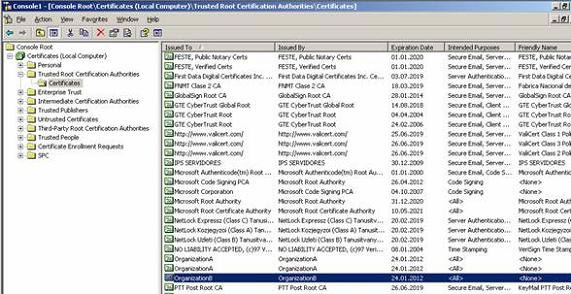
Figure 3: Root CA certificate from another Exchange organization.
Subject Name
Subject Name holds an important position in certificates used by Exchange 2007. The object name of a TLS certificate is used by DNS identification services. The DNS identity service will call the object name of a certificate and compare it to the request. ISA Server is a good example. When launching Outlook Web Access or Outlook Anywhere in an HTTPS bridge, their name on the certificate must exactly match the name in the URL, which is used to access OWA or Outlook Anywhere. The Subject Name field in a certificate binds that certificate to a single server or to a particular domain name.
The following table gives you an overview of the frequently used Relative Distinguished Names, ie RDN.
TenViet tatKieuKich large suatMuc nhatMuc large nhattan use in evidence in the self chiYeu cauTrat tuongNuoc / VungCASCII2111Domain Component (domain component) DCASCII255Nhieu1Bang or TinhSUnicode 12812Vi triLUnicode12813To chucOUnicode 64114Don organization have calculated chucOUUnicode64Nhieunhieu5Ten chungCNUnicode64Nhieu16
Table 1: Relative Distinguished Name names are commonly used.
Request a certificate
The next step is certificate requests, through the Exchange Management Shell. The certificate request file can be used to issue a certificate from the internal CA.
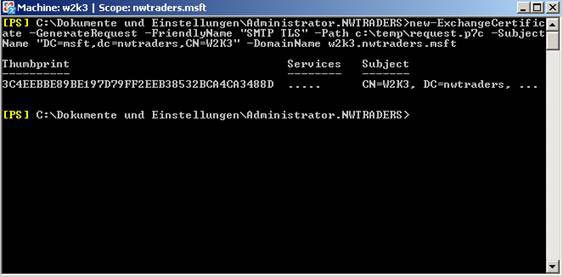
Figure 4: Requesting an Exchange certificate.
Open the CA web console and issue a certificate request using either PKCS # 10 file or 64-bit encrypted CMC file.
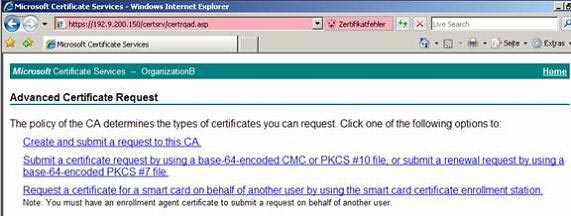
Figure 5: Allow the certificate with the web console.
The figure below shows an example of a certificate request file. If your browser does not allow file opening, you can copy and paste the entire text from the request file into the certificate request area of the web console.
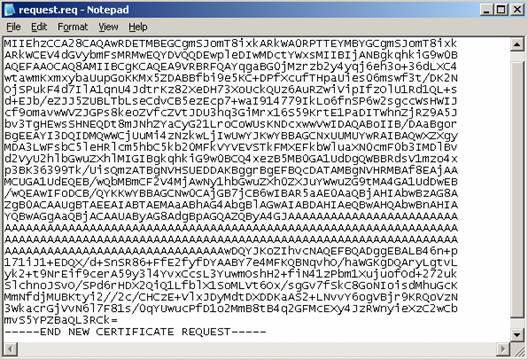
Figure 6: Certificate request file.
Provide a certificate request.
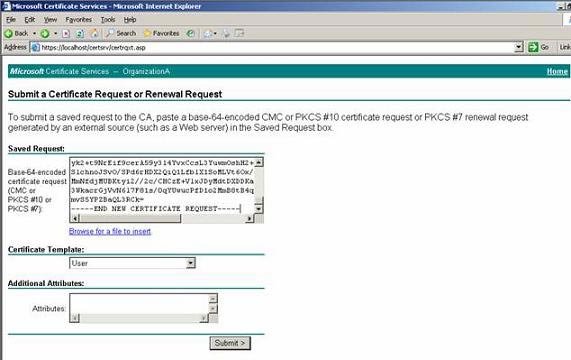
Figure 7: Request a certificate.
In the following figure, you will see the certificate issued from the internal Certificate Authority.

Figure 8: Certificates are issued.
Enter the certificate
An important issue is that you must use Exchange Management Shell to import certificates.
Import-ExchangeCertificate -Path c: certificatesimport.pfx | Enable-ExchangeCertificate -Services SMTP
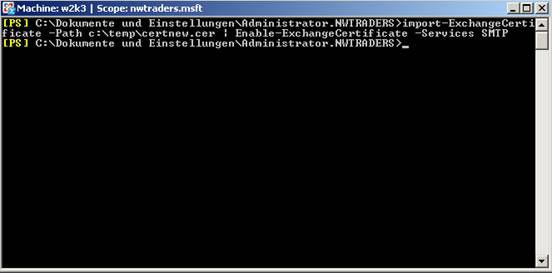
Figure 9: Enter the certificate into Exchange.
Allow the domaene.tld domain to act as a domain list with the Exchange Management Shell
Set-TransportConfig -TLSReceiveDomainSecureList domaene.tld
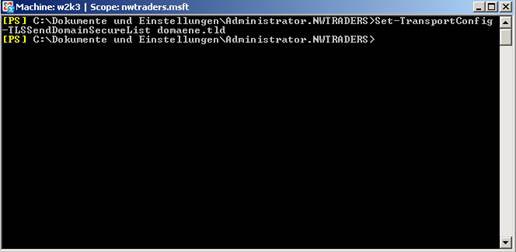
Figure 10: Allow Domain Secure List.
Allow Domain Security to work on SMTP sender named 'Outbound'
Set-SendConnector Outbound -DomainSecureEnabled: $ True
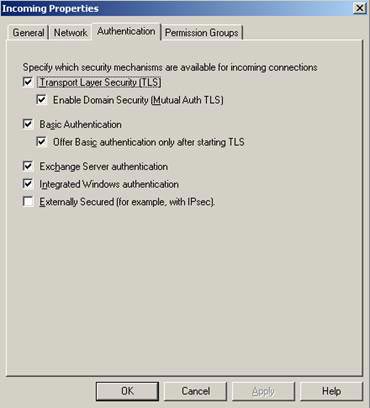
Figure 11: Allow Domain Security with TLS in the Exchange Management Console
Allow Domain Security on SMTP receive connector named 'Inbound'
Set-ReceiveConnector Inbound -DomainSecureEnabled: $ True -AuthMechanism TLS
Note :
Successful distribution of email through the domain that connects secure mail streams is displayed in Outlook 2007 as 'Domain Secure'.
Conclude
As you saw in this article, deploying secure SMTP mail flow between Exchange 2007 servers in different Exchange 2007 organizations is not too complicated. And so you do not need to resort to too advanced solutions like deploying IPSEC.
You should read it
- Transfer from Linux Mail Server to Exchange Server 2007 (Part 1)
- Discover EMC in Exchange Server 2010 (Part 2)
- Switch from Exchange 2000/2003 to Exchange Server 2007 (part 1)
- Transfer Exchange 2003 to Exchange 2007 (Part 2)
- 6 leading Exchange Server monitoring software
- Transfer Exchange 2003 to Exchange 2007 (P.7)
- Transfer Exchange 2003 to Exchange 2007 (P.6)
- Mobile communications with Exchange Server 2007 - Part 1: New device features and improvements
May be interested
- Mail Server in Winroute
 winroute includes smtp and pop3 protocols. you can use it to use for mail servers (such as mail offline) that you have registered with the provider (isp). winroute mail server gives you the ability to send or receive mail to the internet or to users in the local area network (lan), in addition this program also includes the setup, the time allowed at any time an account or users can send or receive mail
winroute includes smtp and pop3 protocols. you can use it to use for mail servers (such as mail offline) that you have registered with the provider (isp). winroute mail server gives you the ability to send or receive mail to the internet or to users in the local area network (lan), in addition this program also includes the setup, the time allowed at any time an account or users can send or receive mail - Use remote connection analysis tool for Exchange Server - Part 1
 in this article we will introduce you to the exchange server remote connectivity analyzer (exrca) tool so that administrators can validate autodiscover, ....
in this article we will introduce you to the exchange server remote connectivity analyzer (exrca) tool so that administrators can validate autodiscover, .... - Step by step install Exchange Server 2010
 facing the increasing demands of organizations and businesses in exchanging information, so that they both save costs, operate faster, are more manageable, more reliable and better security. ..
facing the increasing demands of organizations and businesses in exchanging information, so that they both save costs, operate faster, are more manageable, more reliable and better security. .. - Learn about Mailbox Recovery Exchange 2010
 in some previous versions of exchange server, we can use the recovery storage group feature - rsg, allowing users to store copies of edb files of mailbox database, and can easily restore each of them. separate mailbox section or some other related elements such as mail, calendar or contact.
in some previous versions of exchange server, we can use the recovery storage group feature - rsg, allowing users to store copies of edb files of mailbox database, and can easily restore each of them. separate mailbox section or some other related elements such as mail, calendar or contact. - Managing log files of Exchange Server 2007 - Part 2
 in this article, i will show you some other ways to get log information in exchange server 2007.
in this article, i will show you some other ways to get log information in exchange server 2007. - Analysis of disaster recovery perspective and high availability of Exchange Server
 email today is very popular and has become a standard tool for communication in many businesses, large and small. microsoft is a software company that has a dominant role in the mail market through its exchange server products. businesses choose exchange's reliability, scalability and performance, besides that
email today is very popular and has become a standard tool for communication in many businesses, large and small. microsoft is a software company that has a dominant role in the mail market through its exchange server products. businesses choose exchange's reliability, scalability and performance, besides that - Introducing Exchange Server 2019, how to install Exchange Server 2019
 exchange server 2019 is designed to deliver security, performance, and improved manageability and operations - properties microsoft's biggest customers have come to expect from exchange.
exchange server 2019 is designed to deliver security, performance, and improved manageability and operations - properties microsoft's biggest customers have come to expect from exchange. - Limit sending and receiving mail in Exchange 2007
 the article will introduce some methods to perform the above management tasks for the mail system or for the entire network.
the article will introduce some methods to perform the above management tasks for the mail system or for the entire network. - Transfer MDaemon to Exchange 2007/2003 (Part 2)
 in the previous section, we learned how to export and import accounts and passwords from mdaemon to active directory of exchange server systems when needed.
in the previous section, we learned how to export and import accounts and passwords from mdaemon to active directory of exchange server systems when needed. - Discover EMC in Exchange Server 2010 (Part 2)
 in the previous article, we learned some new features in exchange server 2010, including: high availability, archiving, federation and sharing.
in the previous article, we learned some new features in exchange server 2010, including: high availability, archiving, federation and sharing.










 Debug Mailbox Manager policy application
Debug Mailbox Manager policy application Message queues in Exchange 2007
Message queues in Exchange 2007 Exchange 2007 anti-spam function conversion tool
Exchange 2007 anti-spam function conversion tool Manage Exchange Server 2007 using Windows XP workstation
Manage Exchange Server 2007 using Windows XP workstation Using POP3 and IMAP4 to access Exchange 2007 (Part 1)
Using POP3 and IMAP4 to access Exchange 2007 (Part 1) Instructions for installing Mail Offline on MDaemon program.
Instructions for installing Mail Offline on MDaemon program.